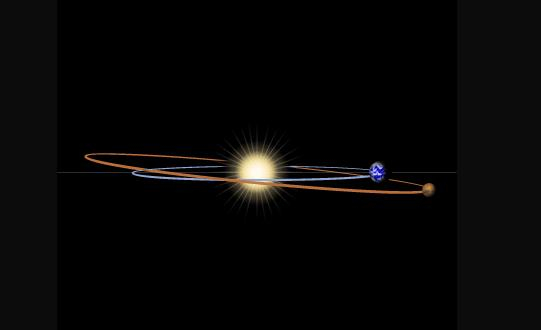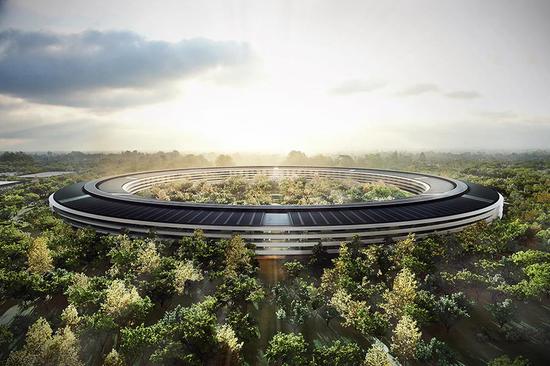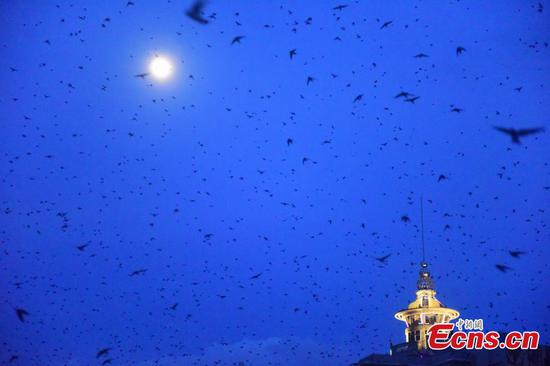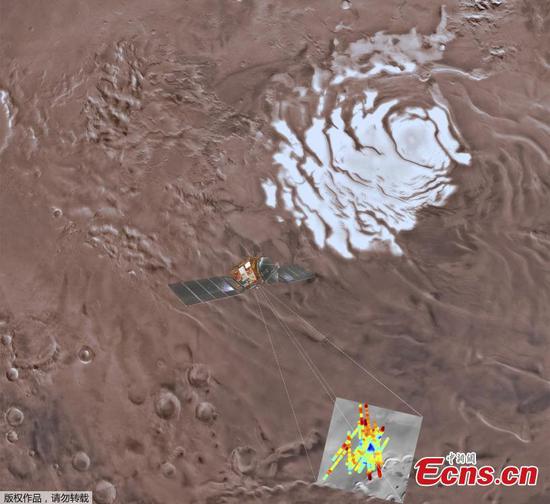
Illustration of the orbits of Mars and Earth around the Sun during Close Approach. (Photo/NASA)
Friday night will give stargazers a visual feast as two spectacular celestial events coincident on the same day. Viewers, from sunset today to the early hours of tomorrow, will be able to watch two “red balls” in the sky, weather permitting.
Longest total lunar eclipse of the 21st century
Following the Super Blue Blood Moon eclipse in January, another significant lunar eclipse of the year is about to reveal itself.
The total lunar eclipse on Friday will be the longest of the century, which will last for 1 hour and 43 minutes. The next lunar eclipse of such a length is due in 2123.
According to NASA, a total lunar eclipse happens when the whole moon enters Earth's shadow.
The moon will appear red in color during the total eclipse instead of turn completely dark because the atmosphere will filter out most of the sun’s blue light, and make the moon look red, said NASA.
The first on-record occurred in China about 3,000 years ago. Stated in “Yi Zhou Shu”, a compendium of Chinese historical documents about the Western Zhou period, the eclipse happened on January 29, 1137 BC.
In history, the “Blood Moon” has often been considered around the world as a sign of infelicity.
In ancient China a red moon meant "bad things are about to happen." According to the Treatise on Astrology of the Kaiyuan Era, a Chinese astrology encyclopedia composed in the Tang Dynasty (618-907), “Blood Moon” represents war and death, meaning that a coup will happen, and soldiers and ministers will die during the fight.
The next total lunar eclipse will occur on January 21, 2019, said NASA.
How to observe the total lunar eclipse?
Unlike solar eclipses, the total lunar eclipse can be observed with the naked eye.
The upcoming lunar event will be visible from Europe, Africa and the Middle East between sunset and midnight on July 27 and then between midnight and sunrise on July 28 in much of Asia and Australia.
If you live in Africa, the Middle East or countries in central Asia, you got lucky, because you can observe the entire eclipse.
The time of the eclipse will be at 4:21 p.m. EDT (2021 GMT) on Friday, and the total eclipse will last from 3:30 p.m. to 5:13 p.m. EDT (1930 to 2113 GMT), according to EarthSky.org.
Beautiful, brighter orb in the sky
You may have heard the news that a liquid water lake was discovered on Mars, but have you ever seen the planet? Take a look tonight!
The celestial spectacle of Mars shows up in the night sky earlier than the total lunar eclipse tonight. It’s called “Mars opposition” when the Sun, Earth and Mars are in a line with the Sun and Mars on directly opposite sides of the Earth.
The Mars opposition occurs about every 26 months, but a perihelic opposition – when Mars opposition happens at its closest position to the Sun – happens in every 15 to 17 years due to factors like their elliptical orbits and Mars’ double orbit time around the Sun compared to Earth, according to NASA.
The red planet will show up brighter when it is in its opposition point, and for this year, the closest approach will take place on July 31, with the closest distance between Mars and Earth of about 57.6 million kilometers. It is the nearest position of Mars to Earth after 15 years, while 2003 still keeps the record for being the year that Mars was at the closest point to Earth in nearly 60,000 years. The distance was about 55.8 million kilometers.
Mars will rise in the southeastern part of the sky after sunset today and set in the southwest the next morning when the Sun rises.
“The orange-red Mars will be like a shining star hung in the sky at that time,” said Hu Fanghao from Purple Mountain Observatory of Chinese Academy of Science. “It’s a rare chance to see the ‘red star’ shining throughout the night. It’s well worth watching.”
How to observe the Mars opposition?
Just look up with your naked eyes and Mars will be visible for much of the night, and for many months.
“By the end of July, Mars will be visible at sunset. But the best time to view it will be several hours after sunset, when Mars will appear higher in the sky,” said NASA. “Mars will still be visible after July and August, but each month it will shrink in an apparent size, as it travels farther from Earth in its orbit around the Sun.”
It will look brighter during the opposition but not as big as the moon, clarified NASA.
However, the current dust storm now shrouding Mars may annoy astronomy enthusiasts. “Through a telescope, you should be able to make out some of the light and dark features, and sometimes polar eyes. Right now though, a huge Martian dust storm is obscuring many features and less planetary details are visible,” said NASA.


















































